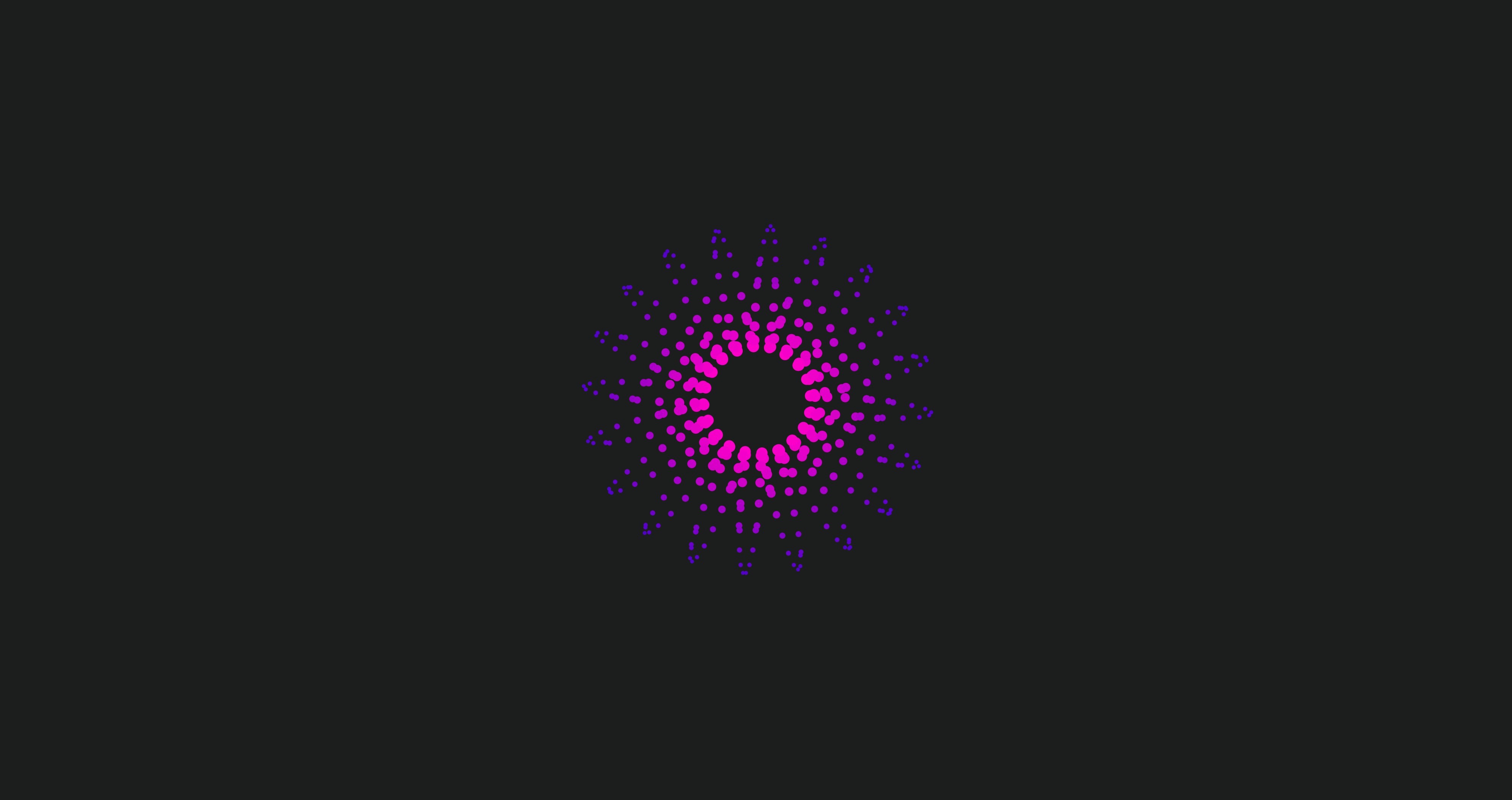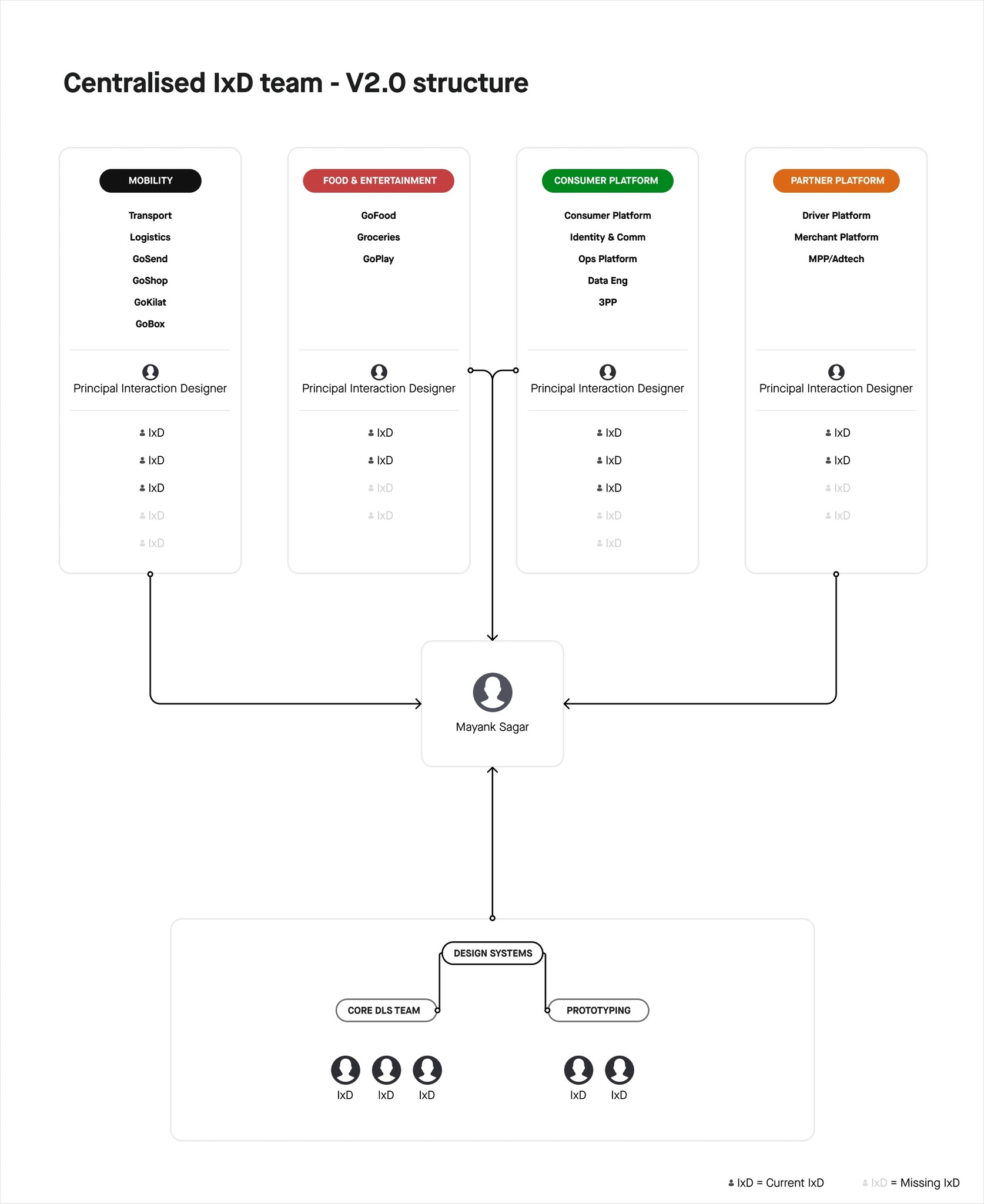
Adapting to a changing org
Adapting to a changing org
YEAR
2022
CATEGORY
CASE STUDY
ROLE
TEAM DIRECTION/PEOPLE MANAGEMENT/DESIGN OPS
ORGANIZATION
GOJEK
We recently launched the second version of our Design Language System. It's called Asphalt-Aloha, and aptly continues the tradition “Salam Satu Aspal,” which translates to “The road that unites us all.” The ambition was and has always been to unite the designs across all platforms and products.
It took us almost a year and a half to create it, and now that it is launched, I wanted to start focusing on solving problems beyond my day to day job.
How could I showcase the same impact of systems, beyond the realm of software?
Still fresh from my learnings, I started to wonder about how systems are implemented in other industries. Could these systems work as principles of operations as well? I realised that the automotive industry uses design systems to create fully functioning vehicles from product sketches. Disney has been using them to bring its characters to life for ages. Heck, if you are like me, you get up every morning, have a glass of water, freshen up, get ready, put on your favourite music, travel to work, …etc. You get the idea. You have already structured your life to work efficiently and coherently. That’s what a system is in principle!
But how could I scale this structure to different aspects of my work at Gojek?
We continued like this for some time, before realising that the structure needed changes. There was an obvious need to get the team together. The logical next step was to change the same.
The central design team structure is born
In collaboration with the Design Ops team, we came up with a structure where we would form teams with people specialising in different nuances of design. This gave us a chance to run a team wide workshop and identify the specialisations as well as the people who wanted to focus on them. We could refer to the Industry standards, but its always good to hear it straight from the horse's mouth. As a result, my current team, the Interaction Design team was born.
It consists of people who specialise in visual design, motion graphics, design systems and prototyping. We have our own objectives, OKRs as well as guidelines. We have a purpose. Our job is to work on the visual designs for Gojek, while ensuring the correct usage of our design system, and finally create multi-fidelity prototypes, using motion design principles.
C
E
N
T
R
A
L
🤝
🤝
🎈
🎈
🤝
🤝
🥳
🥳
🤝
🤝
🎉
🎉


Identifying the need
👇
Identifying the need
👇
Home
Stories
Play
About
Home
Stories
Play
About
The design industry is maturing. There are more and more specialised teams that exist within an organisation. The number of people working in these teams is increasing, and so is the complexity of the projects that they are breathing life into. Now we have a melting pot of designers, developers, product managers, and other teams, all trying to come up with design solutions for highly specific problems. But, all of them working in harmony seems too perfect to be true! Well, it isn’t 😏.
Although, this increase in collaboration is a welcome change, it leads to higher dependencies as well. Bottlenecks arise when different teams have to collaborate and execute initiatives. Goals differ, personalities clash, viewpoints change, ideas mismatch. All these can disrupt the functioning of a healthy team, and THAT is what a collaborative system aims to mitigate.
So how exactly can this approach help a team? To start with; it makes the team become healthy, run smoothly and flawlessly.
When I joined Gojek(2017), we had 1/4th the number of products. This held true for the people as well. There were 4 main products (Transport, Food, Logistics and Driver), each with their own team of dedicated Designers, Engineers, Product Managers, Research, etc.
This was a time of a decentralised design team
It was an efficient system when it came to quick executions of decisions. Minimal dependencies on other products meant that we had no bottlenecks around running as many experiments as we wanted and launch our features without much hassle.
D
E
C
E
N
T
R
A
L
Minimal
Dependencies
Minimal
Dependencies
_Brand_Green ?
_Brand_Green ?
_Brand_Green ?
_Brand_Green ?
_Brand_Green ?
_Brand_Green ?
_Brand_Green ?
_Brand_Green ?
You might notice the part about minimal dependencies in the above lines. The absence of interconnection meant no control over coherence and consistency within the teams and what they were building. By the end of the year, we had almost 8 different shades of our Gojek brand Green and ~20 versions of our navigation bar! And this was reflecting not just in our craft. We were beginning to see the signs of chaos in our teams as well:
Designers had almost no idea about what their fellow designers were doing in other products.
We were losing the essence of a collective design team since we were silo'd in products
Lack of communication resulted in lack of growth. Since there was limited exchange, it meant lack of opportunities to learn from each other
Bringing purpose back to the teams ✦
It has been 3.5 years since we shifted to a central structure and I took charge of the Interaction Design team. We have rolled out countless number of features, built and shipped 2 versions of our design system and even represented Gojek at one of design's biggest conferences - Figma Config. We have also established different systems and rituals to collaborate with the other teams in Gojek. All our documentation now lives at a central place. We support products like any other central system - via tickets. Products can raise tickets on a central board, where an Interaction Designer from the team can pick the same; execute it and come back to the central pool. Benefits of this system are the following:
Governance on the coherence and consistency- 80% of all flows in Gojek now look and work the same.
Ability to execute highest quality craft- We don't need to focus a lot on aesthetics and can support basic features like accessibility right from the first step.
Focus areas for designers to grow into- Creating specialised tracks for the team has helped them realise the different aspects of design and what they want to pick as a long term goal.
Getting the team together- Following the same goals and working closely as a team has helped the designer feel like a team.
Increase the chances of co learning- Working closely also enables designers to share knowledge amongst each other.
Coming soon !